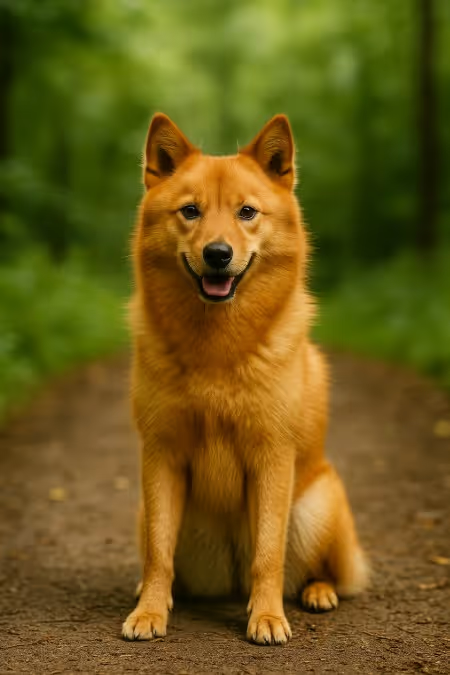The Finnish Spitz is a lively and intelligent breed known for its fox-like appearance and distinctive vocal nature. Originally bred to hunt game birds in the dense forests of Finland, this breed excels in alertness and independence. Finnish Spitz are affectionate with their families, good with respectful children, and thrive in active households. They do best in homes with access to outdoor space and consistent companionship.

The Finnish Spitz is the national dog of Finland and dates back thousands of years. Developed by early Finno-Ugrian tribes, this breed was used to hunt a variety of game—especially birds—using its sharp senses and signature "yodel-like" bark to alert hunters. The breed nearly disappeared due to crossbreeding until enthusiasts in the late 19th century helped restore it. Recognized by the Finnish Kennel Club in 1892 and the Canadian Kennel Club much later, the Finnish Spitz has remained a prized hunting and companion dog in cold northern climates.
A small to medium-sized spitz breed with a proud, alert stance and fox-like features.
Moderate grooming required, with heavier attention during seasonal shedding periods.
Finnish Spitz need daily activity to stay mentally and physically fit.
Highly intelligent and independent, Finnish Spitz respond best to upbeat and positive training sessions.
A quality diet tailored to the dog’s size, age, and energy level is vital.
The Finnish Spitz is a generally healthy breed with few genetic disorders.
While still rare in Canada, Finnish Spitz can be sourced through responsible breeders or breed-specific rescues.
Are Finnish Spitz good apartment dogs?
Not ideal. They tend to bark often, which can be problematic in close quarters.
Do Finnish Spitz shed a lot?
Yes, especially seasonally. They shed their undercoat heavily in spring and fall.
Are Finnish Spitz hypoallergenic?
No. They produce dander and are not suitable for allergy sufferers.
Do Finnish Spitz bark a lot?
Yes. They are known as the “barking bird dog” and require bark training.
Are Finnish Spitz good with kids?
Yes. They are playful and gentle with respectful children.
Can Finnish Spitz be left alone?
Only for short periods. They can become bored and vocal when left alone too long.
Are Finnish Spitz easy to train?
They are intelligent but independent—train with consistency and rewards.
Do Finnish Spitz get along with other pets?
Usually yes, especially if socialized early. They may chase small animals.